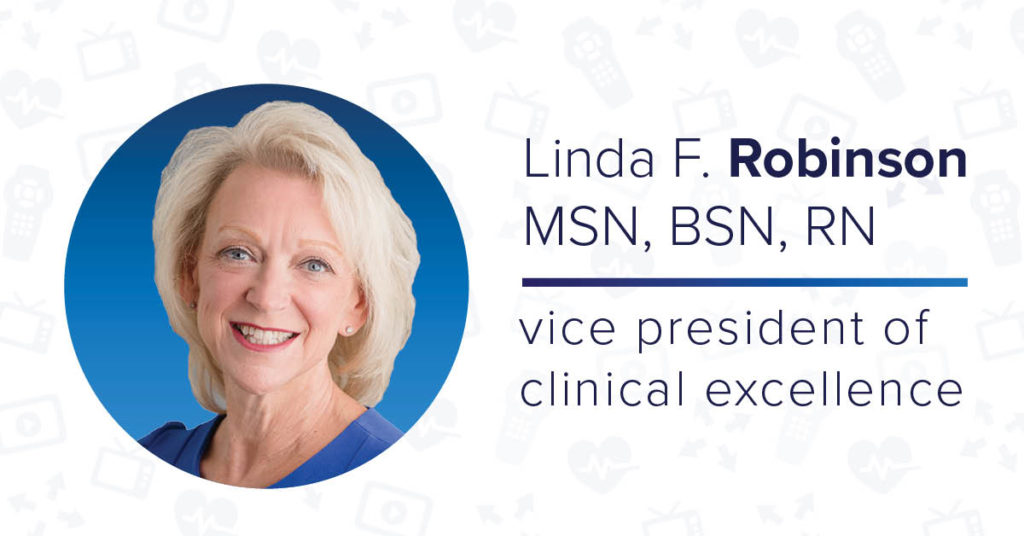
We recently sat down with the VP of Clinical Excellence at MDM Healthcare, Linda Robinson to discuss how patient engagement drives hospital quality and safety initiatives. Robinson, an award-winning nurse, has worked in the patient care industry for 35 years. She has done extensive research in the area throughout her career. “When we have patients become active participants in their care, that is when they start to understand what they need to do to get themselves better. I would say to patients, healthcare doesn't just happen to you, it’s happening with you,” she said. Robinson illustrated the idea that humanizing care means empowering, educating, and engaging patients in their care to support the patient experience. “That's bringing humanity into the care at the bedside, and that really helps us drive quality and safety. All those things are fundamentally important for patients today,” she said.

One tool healthcare providers have today to help drive better outcomes and elevate the patient experience is technology. Technology plays a role in helping to empower patients and develop that patient experience, especially as it relates to quality and safety. “The healthcare industry should be open to embracing technology. The rest of the world outside the hospital walls is really embracing technology and hospitals are just now starting to do that,” Robinson said. “What I think is really exciting is that technology has the ability to be in that patient room. Even when the healthcare staff or the clinicians are not. So, it can help personalize, humanize, and demystify the healthcare experience because that information is in the room in real-time and at their fingertips,” she continued. She further explained that while technology is an amazing tool for healthcare providers when it comes to dealing with patients, it should be intuitive. “Technology should be very simple to use. A patient should not have to learn how to use something in the room when they’re sick and frankly overwhelmed. It should be as easy as working a television remote,” she said.
One type of technology that is changing the landscape for acute care facilities is digital whiteboards. A digital whiteboard, unlike the grease board on the wall, is kept up in real-time, and it's there for the patient to view throughout the day. Digital whiteboards connect with hospitals' EMRs and are updated in real-time which provides vital information to hospital care teams, patients, and their families. Robinson explained how digital whiteboards are used to enhance the patient experience and drive better quality and safety outcomes. “When patients go to the hospital so many times, they don't know what's going happen. They think: I don't know, nobody tells me anything. Technology can help us hard-wire bedside shift reports. Every patient should get a bedside shift report. They are one of the biggest drivers of quality and safety. Patients can be assured that the technology the digital whiteboard displays in their room is going to be up to date. They can see tests that are ordered, activities that they need to do, and the goals that have been set for them,” she said. Digital whiteboards also provide patients and their families with key information and answers to any questions they may have. This information at their bedside comforts them, keeps them informed, and really transforms their care. It’s a win-win situation for both patients and hospital care teams as Robinson explains, “These technology tools help drive quality and safety from a patient's perspective, but then also from a healthcare provider's perspective.”

Technology is now allowing patients to become more empowered by getting educated on their conditions. “Delivering information in a timely manner in digestible bites for the patient at home, and at the bedside really makes a difference in their care. It not only drives health literacy, but it increases outcomes. It also keeps hospital costs down,” said Robinson. Robinson described how the technology works. “Let's say a patient comes into the hospital and, upon admission, there is a screening for a fall. So, a fall score is done, and the patient has a high fall risk. As soon as that is documented within the EMR, a video about preventing falls in the hospital can automatically be sent to that patient. That patient then gets a prompt on their television set that says: “you've been ordered a video about your health. Would you like to watch it now, or would you like us to remind you later?” The patient can watch it now by pushing 1 on their pillow speaker or remote, whatever is in the room for them to use for their television or they can say, remind me later. If they say, remind me later, it can be customized to remind that patient,” she explained. One of the biggest benefits of the technology used in Journey PX solutions is that they provide care facilities with a better means of exchanging vital information in real-time. “It's closing gaps in communication, and we know that when we close gaps in communication, it improves clinical outcomes. It keeps them safe, and it drives quality within their care,” said Robinson. “You're giving them the information they need and that's how trust is built, and that's what has them coming back to your organization as well,” she continued.
Listen to the full interview on the PX Space podcast available on Apple Podcasts, Spotify, and Amazon Music.


